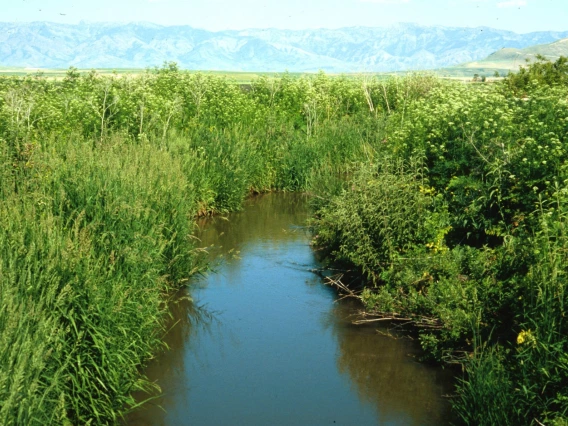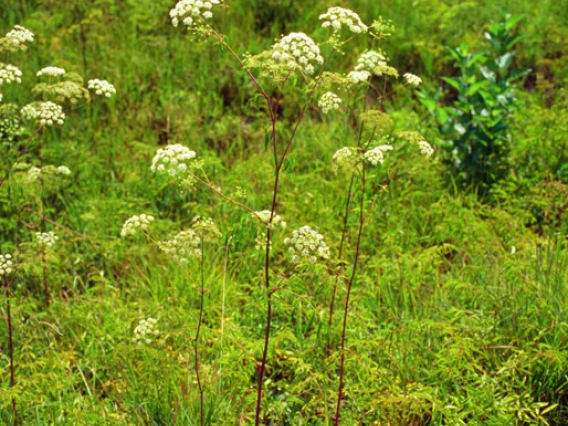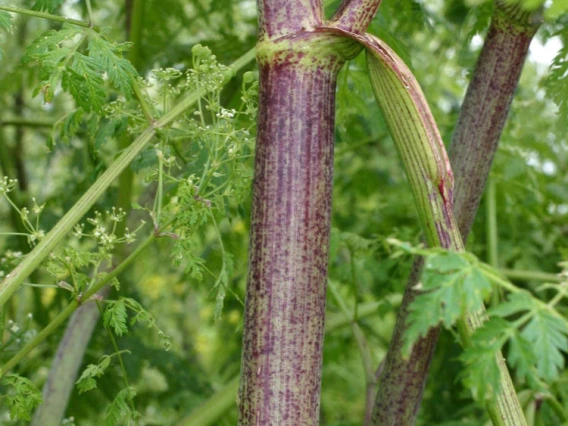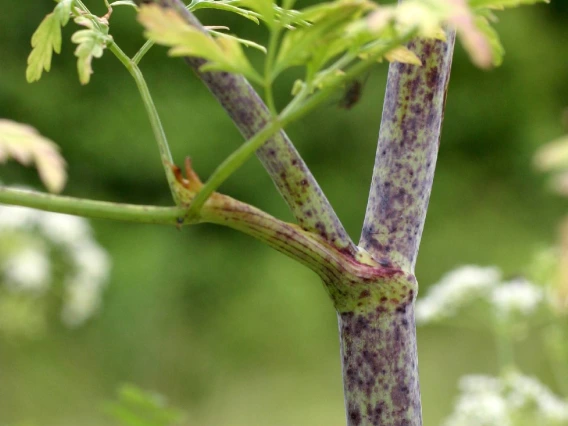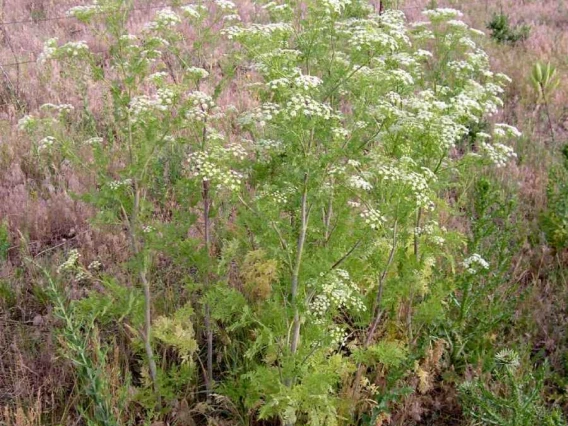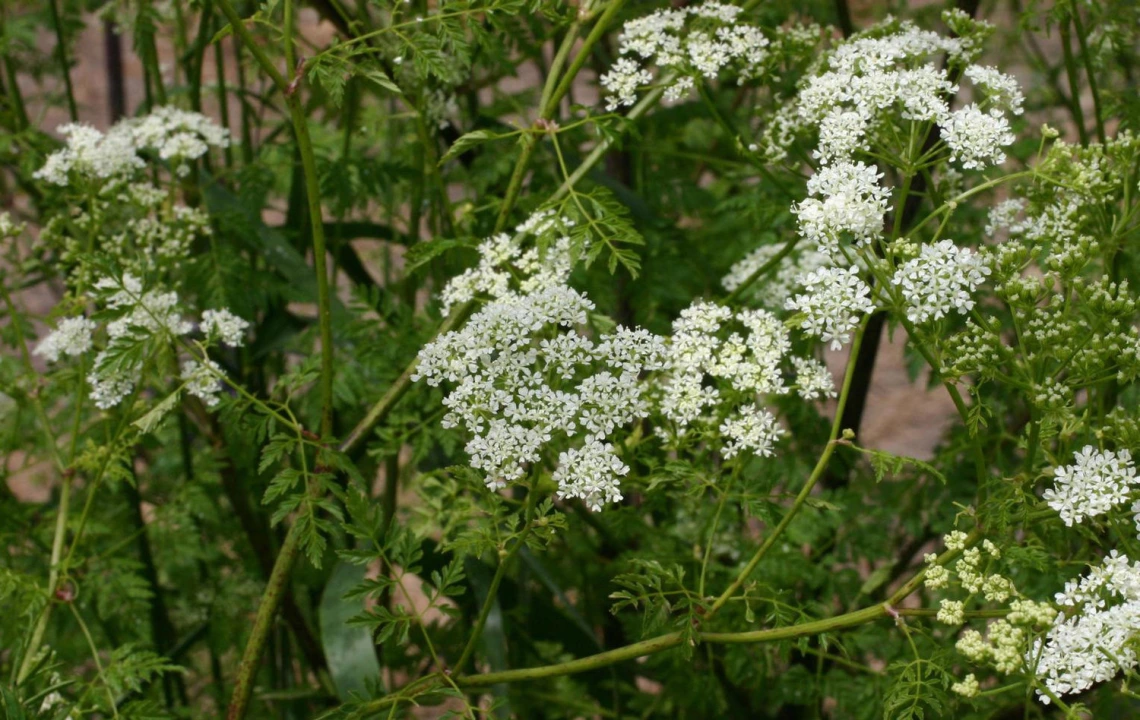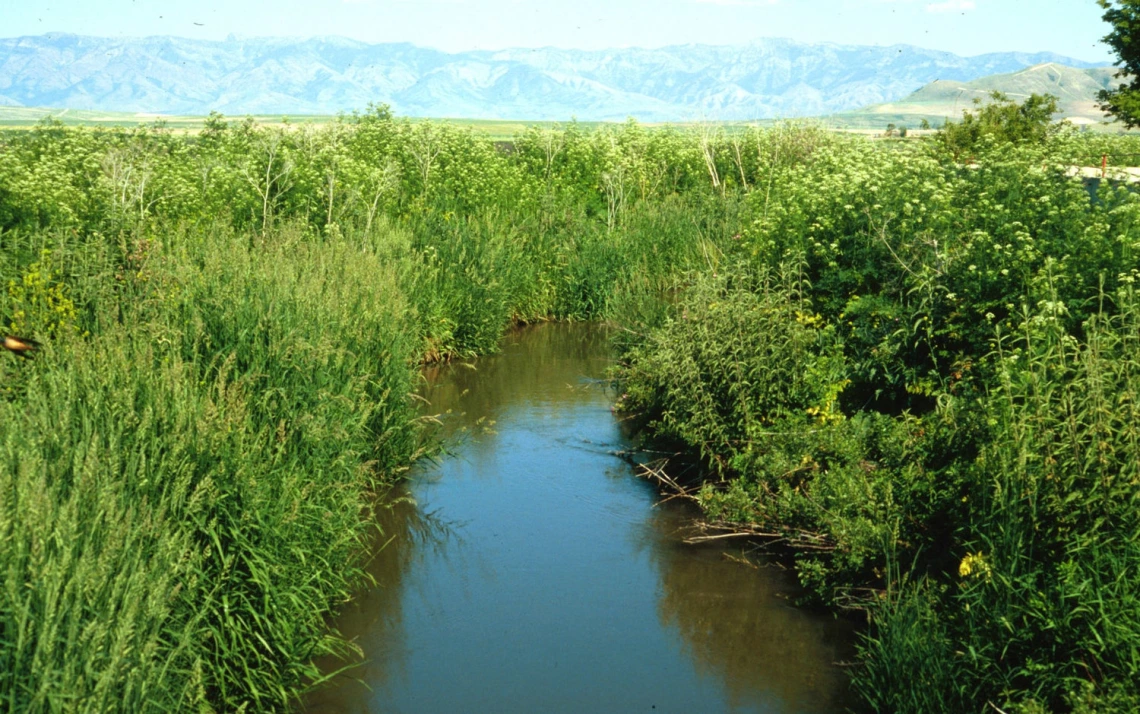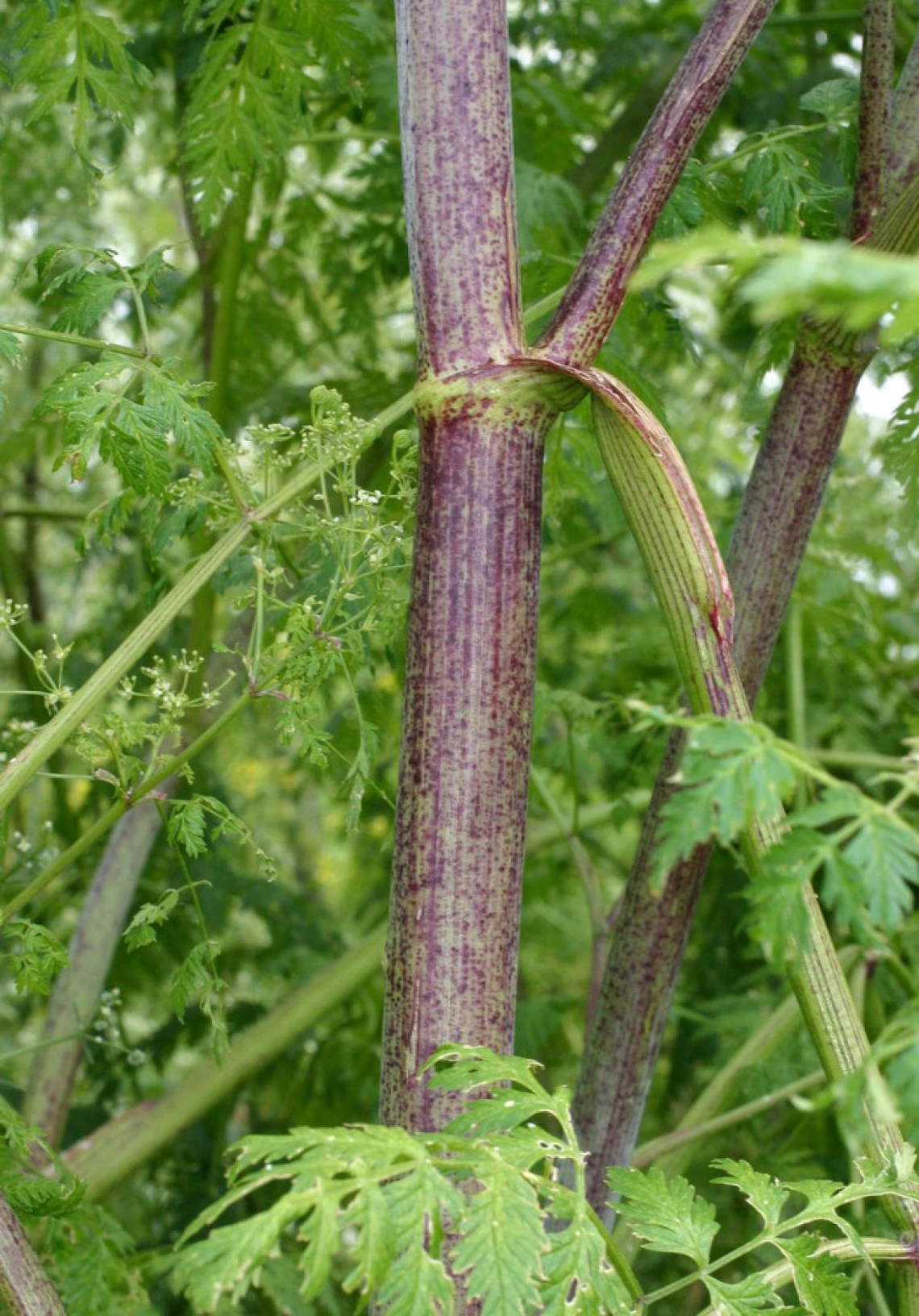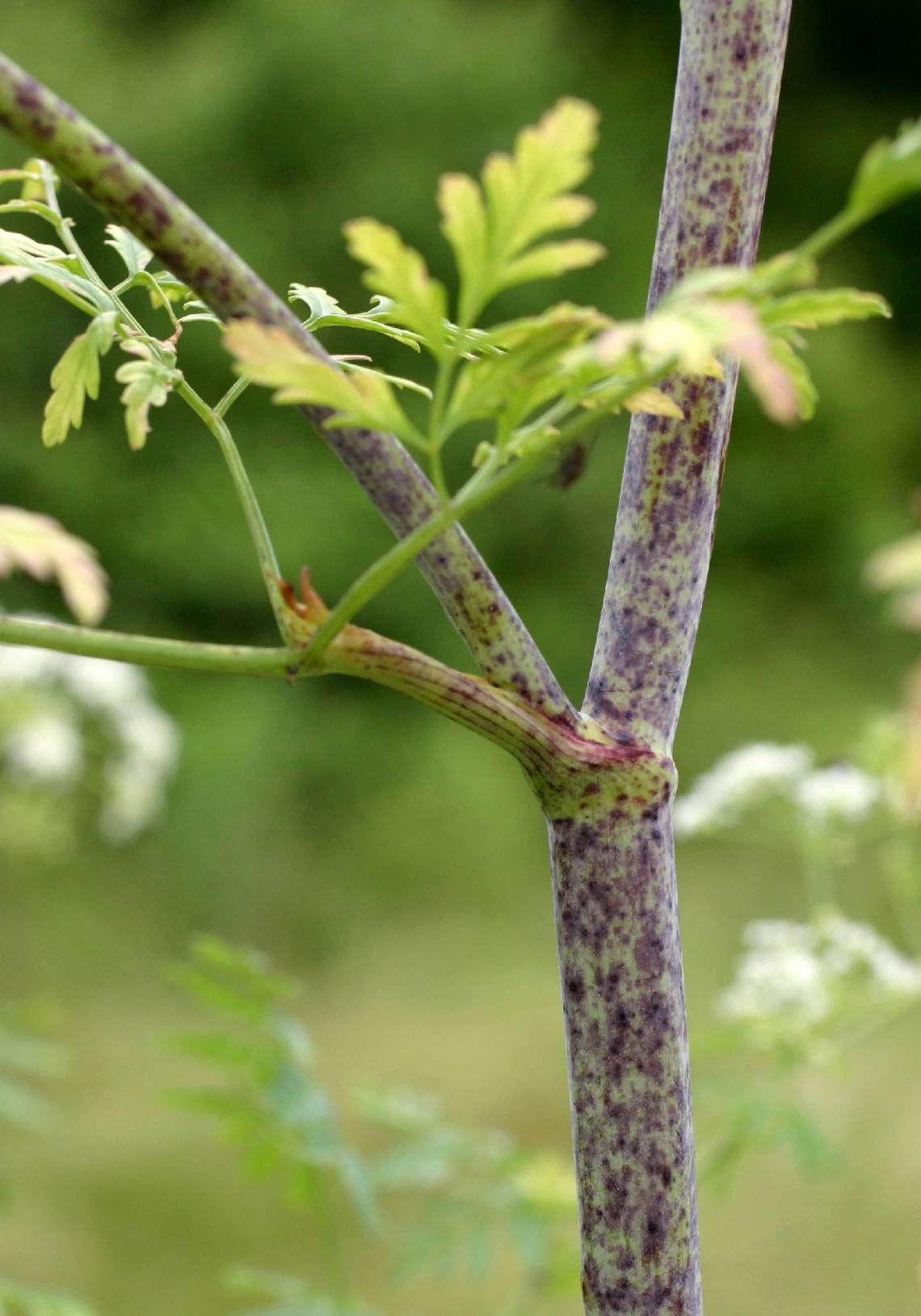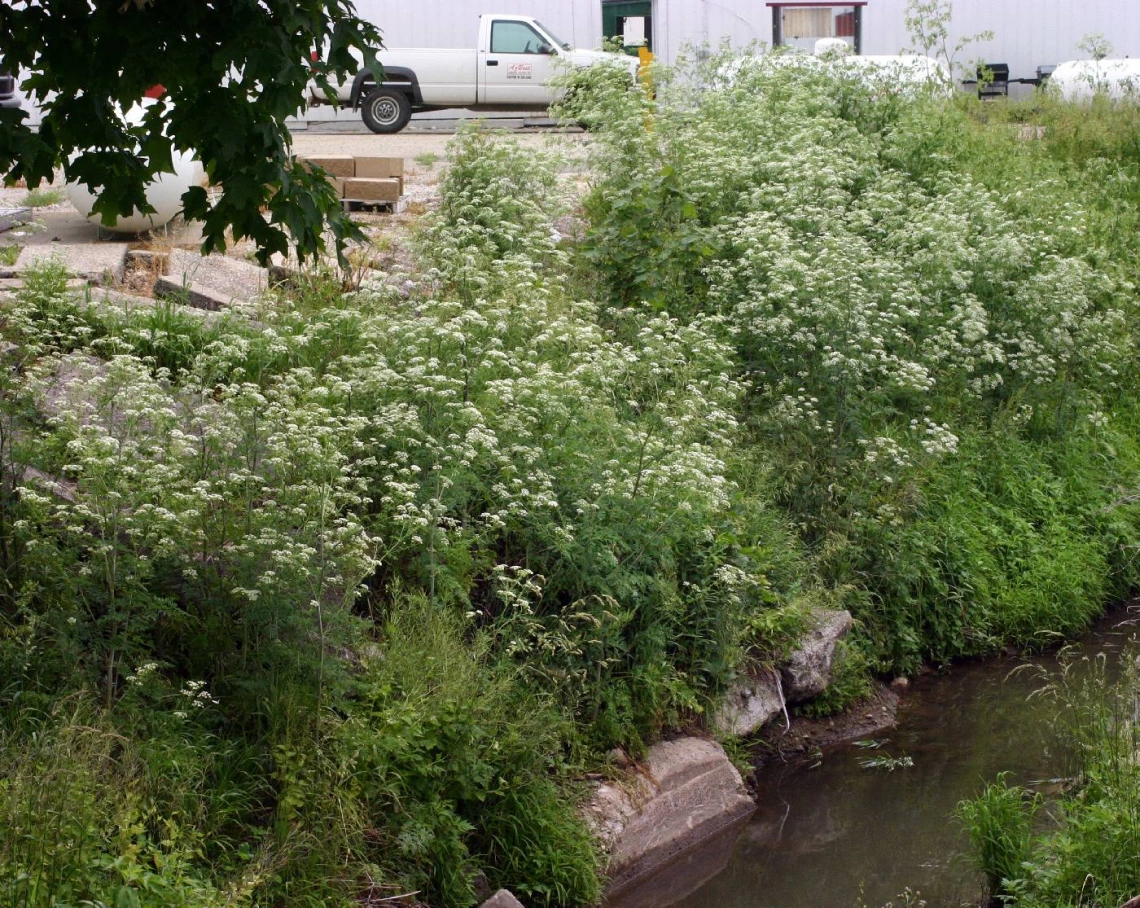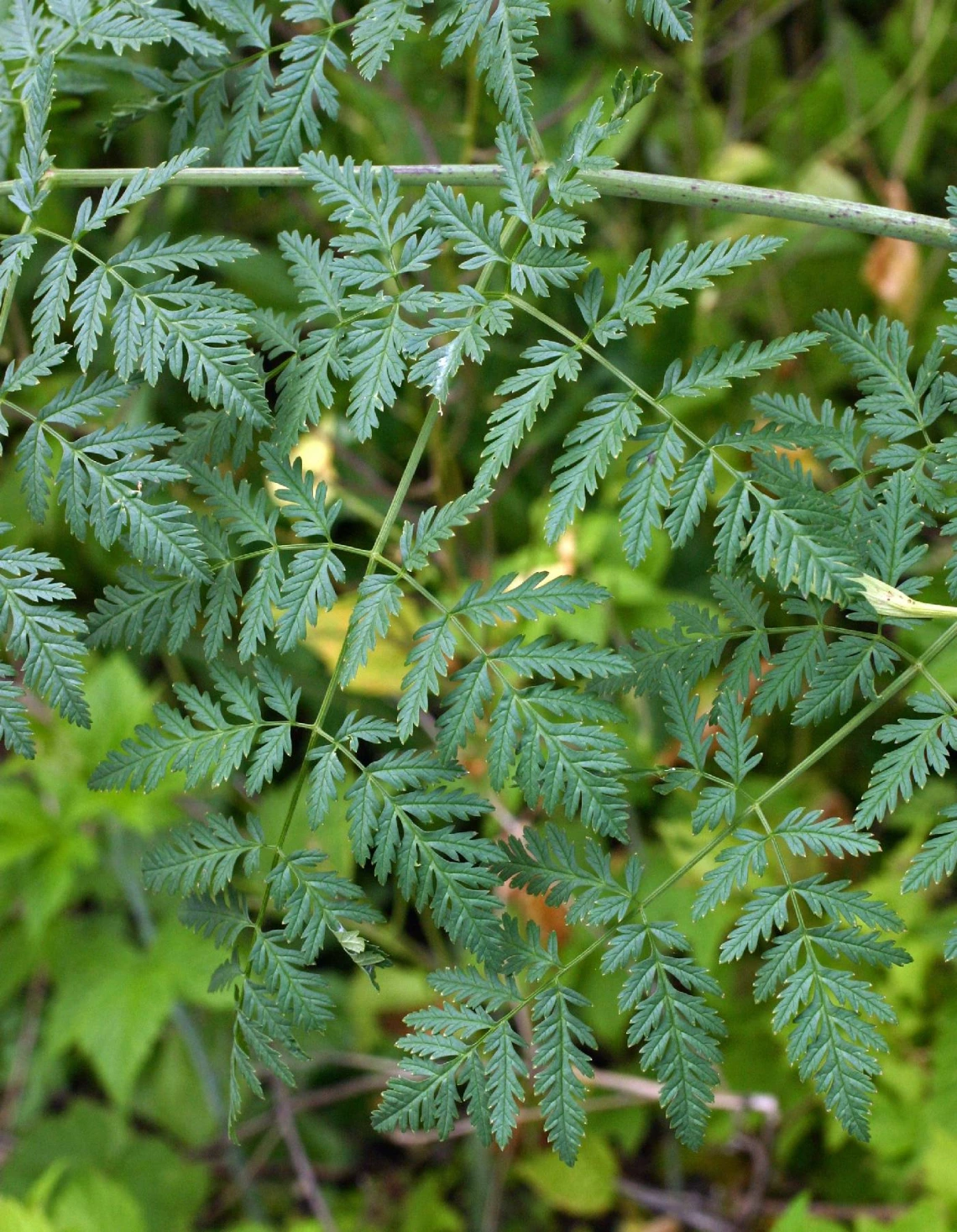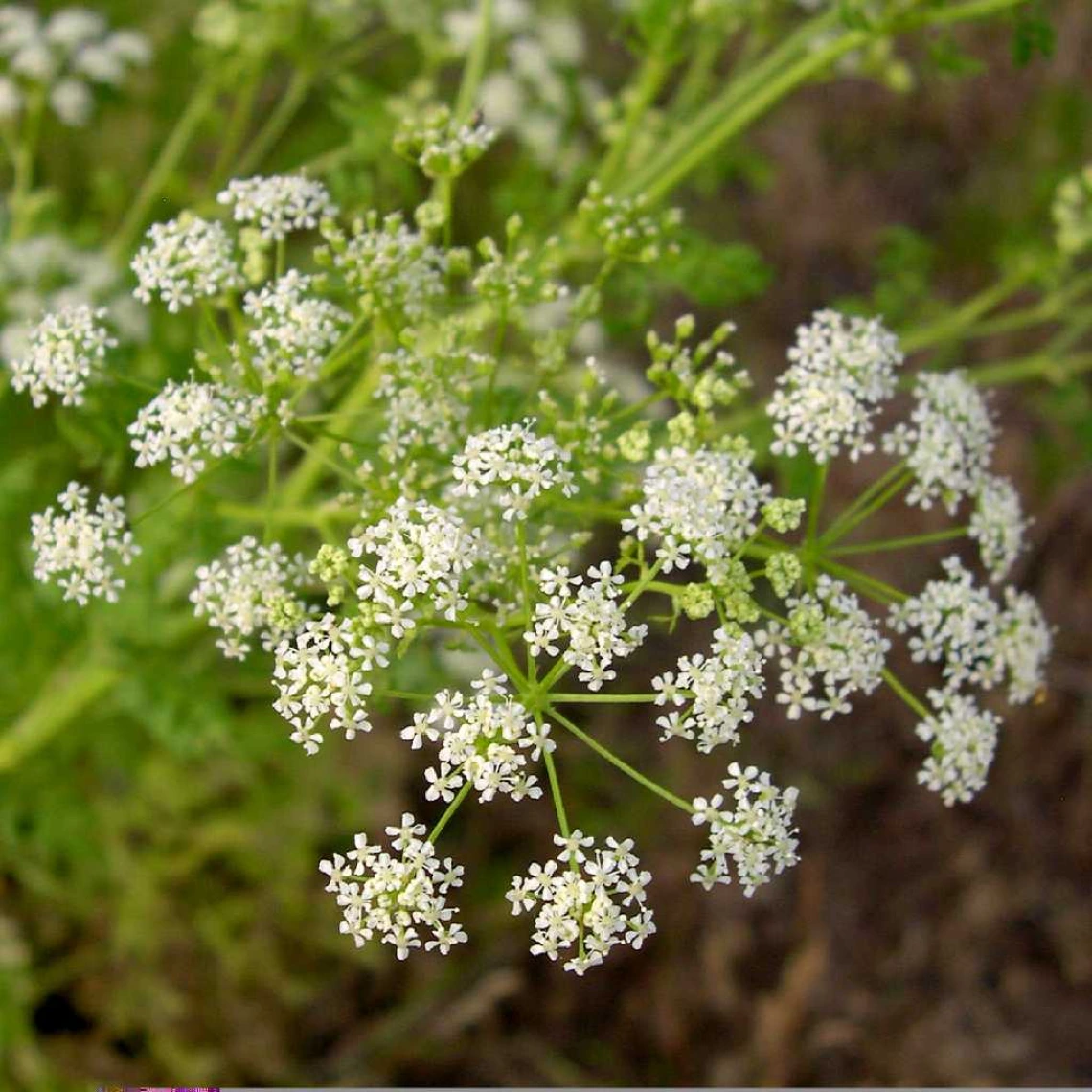Image

Poison hemlock
Robert Vidéki, Doronicum Kft., Bugwood.org
Common Name(s)
Poison hemlock
Scientific Name
Conium maculatum
Family
Carrot or parsley family (Apiaceae)
Reasons for concern
All parts of this plant are poisonous to animals and people. It can easily outcompete native species.
Classification
Non-native
Botanical description
Tall, poisonous plant with many branching stems, forming dense colonies.
Leaves
Rosette in Year 1. In Year 2 leaves are opposite, triangular. Shiny green. Finely divided into leaflets, looking somewhat like a fern. Toothed. Each leaf is 6” to 18” long. Stem of the leaf is wrapped around the stem. If crushed, leaves produce a foul odor. Veins of the leaves run to the tips of the teeth.
Stem(s)
Up to 10’ tall, but usually less, many branched. Grooved, hollow, with purple spots or blotches.
Flowers
Blossoms June through September. Flowers look at lot like Queen Anne’s Lace. Numerous tiny white flowers form umbrella-like clusters, called umbels. Each flower has 5 petals.
Seeds
Seeds contain the highest concentration of poison. They are very small and grayish-green in color. Plants produce thousands of seeds each season. They ripen and drop by August
Roots
Taproot is large, long, white, fleshy, hollow, and hairless, with the odor of carrots or parsnips.
Native to
Eurasia. Introduced to the U.S. as an ornamental garden plant due to its ferny foliage.
Where it grows
In moist, disturbed soils along the edges of standing or running water, in shady locations. Roadsides, at elevations of 4,500 to 10,000 feet.
Lifecycle
Biennial, occasionally a perennial
Reproduction
By seeds, which are dispersed by wind, water and humans
Weedy Characteristics
Forms dense stands and outcompetes other plants for space and light. Each plant can produce more than 30,000 seeds, which remain viable for several years.
Look-alike Plants
Looks like parsley, Queen Anne’s lace. or Water hemlock (Cicuta douglasii). Water hemlock, a perennial, is another poisonous plant found in northern Arizona. Its leaf veins run to the notches between the teeth rather than to the tips of the leaves. Blooms July through September.
Control Strategies
Hand removal by hand-pulling or hoeing works well when plants are in the rosette stage and the population is small. Wear long sleeves and long pants. Protect your eyes and skin. Routine mowing before plants flower and go to seeds can reduce populations. Wear gloves to avoid contact with sap. Mowing in spring can kill second year plants. Mowing again in late summer can kill seedlings and any regrowth. Be sure to clean all equipment to avoid spreading seeds. Do not burn plants as toxins maybe released into the air. Several herbicides are available for controlling poison hemlock when they are in the seedling or rosette stage. Contact your local county extension office for more information on chemical control. Report any populations on public property.
References
- Poison Hemlock (Conium maculatum) USDA Agricultural Research Service
- Poison Hemlock USDA Forest Service
- Field Guide for Managing Poison Hemlock in the Southwest US Department of Agriculture
- Poison Hemlock University of California Agriculture and Natural Resources IPM – Pests in Gardens and Landscapes



